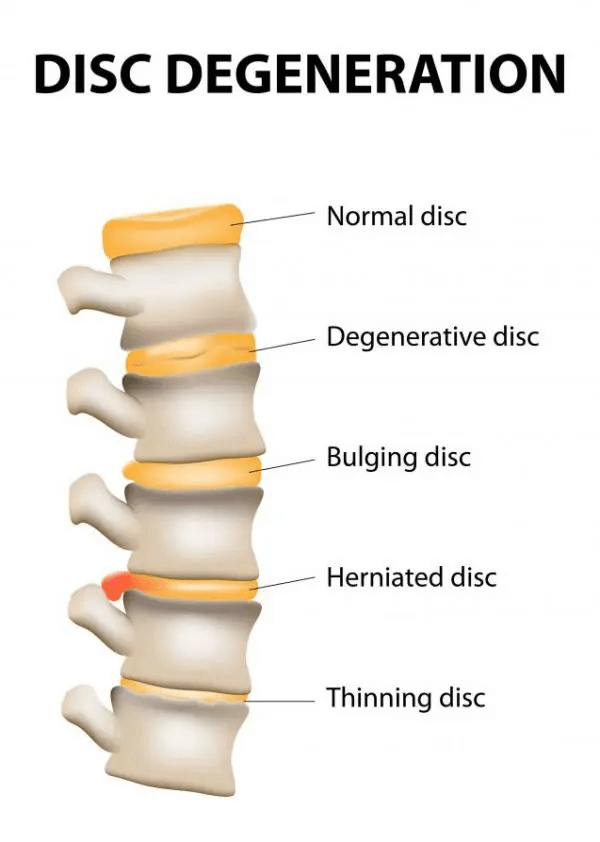Slipped Disc
Everyone suffers from back pain at sometime in life but when the spinal cushions called “spinal discs” are the source of the pain – the experience becomes severe and disabling.
The last two discs (L4 and L5) located in the lower back area are the most common discs to cause so much pain. There are two discs in the cervical spine (C5 and C6) that are the most frequent levels affected in the neck but those in the neck are less dramatic and disabling than those disc bulges or herniation in the lower lumbar spine.
Discs are attached to the bone above and the bone below with thousands of fibers that form a crisscrossing mesh that contain the central disc material that is made of a thick jelly/mucous like substance. These disc materials give strength on the outside and sponginess inside to produce a shock absorbing effect throughout the spine.
The term “slipped disc” is commonly used to identify these cases but in actuality, the disc can never slip like we think; instead the fiber mesh gets stretched and weak areas tear thus allowing the center material to bulge outward. This causes severe pain.
If the bulge (herniation) is severe enough, the nearby nerve roots that supply the legs or the arms will also become irritated; so a disc problem can also cause radiating pain into the upper or lower extremities.
In the case of a lumbar disc herniation the radiating pain could affect the buttock all the way down to the foot, and on the same side as the bulge.
An MRI (magnetic resonance image) can accurately demonstrate these conditions but medically the trend is to treat with pain medication and perhaps some spinal traction therapy.


Spinal surgery is the next step if these conservative approaches fail; however, 30 years of well documented research in chiropractic approaches to treating these conditions have accumulated an 80% success rate in the non- surgical management of contained (non-ruptured) disc cases.
Since the risks of general surgery are compounded by a 50% failure rate for lumbar spinal disc surgeries it certainly makes sense to bring in the chiropractor for a consultation to examine the prospects for a non- surgical intervention. Even if surgery is ultimately necessary, chiropractic care improves the odds for more rapid healing and greater success in overall recovery.
Remember, only a chiropractor can evaluate a spine with a disc problem and determine if and when chiropractic methods can help in any particular case. Many studies have shown that most disc surgeries can be avoided with timely chiropractic care and that’s good news!
Have You Had Your
Spine Checked?
As a courtesy for visiting this page, get 20% off your chiropractic initial evaluation – when you book online: inclusive of doctor’s consultation, spinal examination, x-ray interpretation, creation of a specific health program based on your condition and may include a spinal adjustment.
